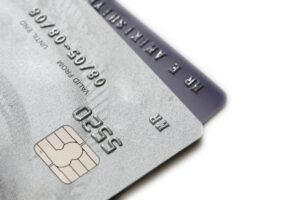If you are an Amazon seller, it is highly likely that you are experiencing a perfect storm. A perfect storm is a combination of events that produce a powerful event. The current storm comprises an economic crisis, too much inventory (a by-product of the last two years), and less space for fulfillment by Amazon (FBA).
 Our perfect storm analogy was inspired by a hurricane in 1991 that hit parts of the East Coast (between Nova Scotia and Boston) and became the inspiration for the 2005 movie aptly named the Perfect Storm.
Our perfect storm analogy was inspired by a hurricane in 1991 that hit parts of the East Coast (between Nova Scotia and Boston) and became the inspiration for the 2005 movie aptly named the Perfect Storm.
In part one, we’ll help you to understand and define the elements of this perfect storm in the context of current events relevant to brands and Amazon sellers. We will also provide you with some additional perspectives to ensure that you and your business not only weather the storm but emerge safely on the other side.
The economic crisis for customers
Consumers have faced economic headwinds for the last two years. The monthly costs of living (rents/mortgages, groceries, etc.) have also grown but in many if not most cases, incomes have failed to keep up with inflation. It’s also worth noting that during the pandemic, many consumers received stimulus assistance and/or tax breaks that artificially inflated consumer demand when that money was spent in stores and online. This “free money” triggered inflation, as seen in the graph below, starting in April 2021 and through 2021. When stimulus assistance ended in early 2022, consumers became both more price-sensitive and more value-conscious.
It has also become increasingly clear that consumers are forced to decide between discretionary spending and non-discretionary spending. Non-discretionary spending refers to items necessary for daily life – rent/mortgage, bills/utilities, groceries, etc. Examples of discretionary spending examples include meals at restaurants, hobbies, entertainment costs, electronics, etc. According to PYMNTS, Amazon’s share of discretionary spending remains at 14% of spending in 2022.
decide between discretionary spending and non-discretionary spending. Non-discretionary spending refers to items necessary for daily life – rent/mortgage, bills/utilities, groceries, etc. Examples of discretionary spending examples include meals at restaurants, hobbies, entertainment costs, electronics, etc. According to PYMNTS, Amazon’s share of discretionary spending remains at 14% of spending in 2022.
As a brand selling on Amazon, it’s crucial to understand where your products fall in the context of discretionary or non-discretionary spending.
Are Those Discretionary or Non-discretionary Thunderclouds on the Horizon? What are the ramifications?
If your products are discretionary – they are almost by default – higher priced items that in the current economic circumstances will likely be difficult to sell. Most consumers (except for those in the high-income brackets) are spending significantly less on discretionary goods. If you have an oversupply of discretionary inventory, you need to consider an economically-friendly bundle or merchandising tactic to generate sales and/or consider using secondary marketplaces to move these items. We believe brand owners unable to liquidate excess stock prior to the current economic crisis are facing uncertain and potentially disastrous times (in fact, the approaching thunderstorms could signal a huge problem). Pricing adjustments intended to generate revenues must be made in a manner that does not tarnish the brand image in the eyes of consumers.
If your products are non-discretionary, the forecasted storm is a bit further away. However, you may see new emerging competitor brands selling the same items. Brand owners in this category will require strategy, innovation, and deeper analytics to drive profits on low-margin products. And as noted above, selling quantity packs or bundles will serve to increase the average order value. It’s also critical to have an awareness and understanding of how your margins may be impacted by logistics and marketing costs. Brands and sellers in this category MUST constantly factor in margin and profitability. A failure to thoroughly consider economics could result in flat loss-leaders and/or barely hitting break-even points.
further away. However, you may see new emerging competitor brands selling the same items. Brand owners in this category will require strategy, innovation, and deeper analytics to drive profits on low-margin products. And as noted above, selling quantity packs or bundles will serve to increase the average order value. It’s also critical to have an awareness and understanding of how your margins may be impacted by logistics and marketing costs. Brands and sellers in this category MUST constantly factor in margin and profitability. A failure to thoroughly consider economics could result in flat loss-leaders and/or barely hitting break-even points.
Additionally, it’s critical to understand how pricing and product availability impacts consumer perception of your brand and whether or not you’re providing a compelling value proposition. To summarize, and while it may seem rudimentary, brands have months, not years to adapt to this new economic reality.
Business owners must also have a keen awareness of unit economics at a product/SKU level to ensure that adequate revenues are realized for every sale. It is also important to align these same costs relative to customer lifetime value metrics. Does it even make sense to sell a product at a given price based on replenishment cycles? If the answer is no – then immediate pricing and marketing cost-related changes must be made – and with urgency.
A failure to grasp the per-SKU CAC (customer acquisition costs) as well as a limited understanding of replenishment cycles – especially for non-discretionary products – can kill a brand (and sink the ship) before the business owners might even realize they’re in the middle of a storm.
We hope that Part 1 of this article gives you sufficient context and helps to explain how we got here and where we’re going! Please stay tuned for Part 2 (which we’ll post here in the coming days) and in the meantime, don’t hesitate to contact us with questions. The Equity Commerce Perfect Storm Forecasting Team awaits.



 In the past decade, we have seen a new type of brand emerge from the e-commerce landscape. We’re talking about the growth of direct-to-consumer (DTC) brands (like Casper, Dollar Shave Club, Warby Parker, Glossier, etc.). Credit these brands for finding and filling product gaps thanks to a customer-
In the past decade, we have seen a new type of brand emerge from the e-commerce landscape. We’re talking about the growth of direct-to-consumer (DTC) brands (like Casper, Dollar Shave Club, Warby Parker, Glossier, etc.). Credit these brands for finding and filling product gaps thanks to a customer- Let’s begin by addressing the current chaos facing DTC brands.
Let’s begin by addressing the current chaos facing DTC brands. No surprise, but as marketplace-natives, these brands are familiar and comfortable with both the good and bad of Amazon. When these brands rely on that experience combined with Amazon’s legacy of innovations and their own scrappy presence, they’ll be positioned to grow their market share.
No surprise, but as marketplace-natives, these brands are familiar and comfortable with both the good and bad of Amazon. When these brands rely on that experience combined with Amazon’s legacy of innovations and their own scrappy presence, they’ll be positioned to grow their market share. 
 Costs of Logistics and Customer Acquisition: The Two-Headed Beast!
Costs of Logistics and Customer Acquisition: The Two-Headed Beast! By using familiar Amazon Prime logos and icons on DTC product detail pages and websites, brands, and sellers can quickly communicate a sense of trust to consumers who might be new to the brand and/or first-time visitors to the brand website. Buy with Prime also brings additional value and consumer confidence since it enables DTC brands a quick and recognizable payment and checkout option via
By using familiar Amazon Prime logos and icons on DTC product detail pages and websites, brands, and sellers can quickly communicate a sense of trust to consumers who might be new to the brand and/or first-time visitors to the brand website. Buy with Prime also brings additional value and consumer confidence since it enables DTC brands a quick and recognizable payment and checkout option via